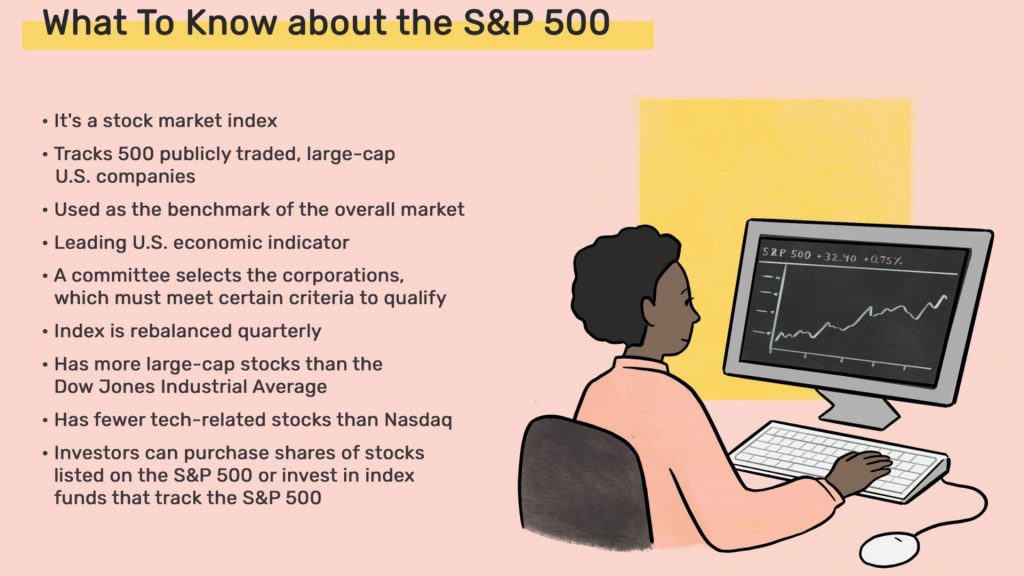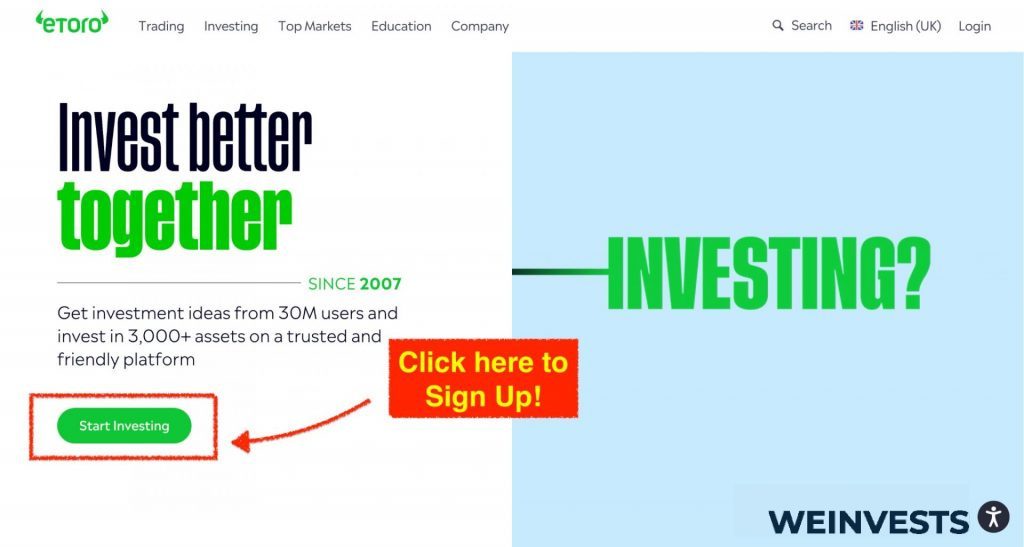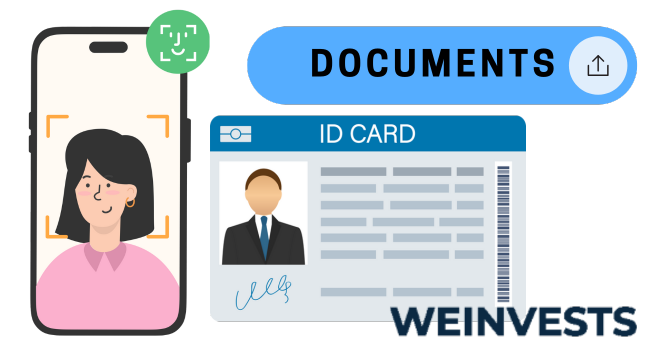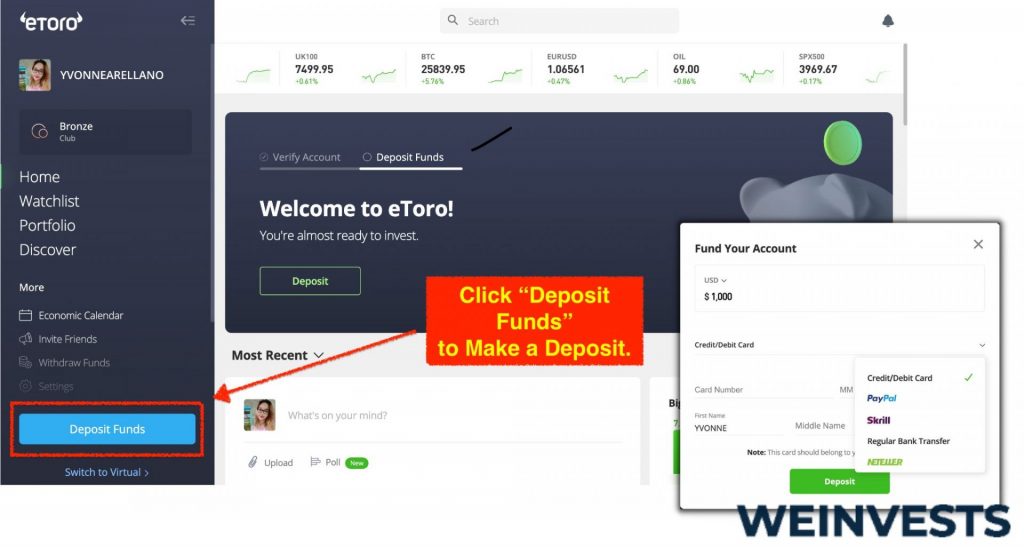This content represents the writer’s opinions and research and is not intended to be taken as financial advice. The information presented is general in nature and may not meet the specific needs of any individual or entity. It is not intended to be relied upon as a professional or financial decision-making tool.
The S&P 500 index has returned an average of 12.56% per year over the last decade.
If you want to track the S&P 500, all you need to do is invest in an ETF that aims to emulate the returns of the index.
But not just any will do. Fees, past performance, and prominence matter when selecting such a fund.
This is why we created this article. To present to you the 5 best S&P 500 ETFs that have been issued by the most well-established institutions out there.
Let’s cover some basics first…
Table of Contents
What are ETFs?
Think of ETFs (Exchange-Traded Funds) as investment vehicles that can be traded on stock exchanges.
When you invest in an ETF, you basically buy shares of an investment company that is supposed to invest in stocks and bonds, among other assets. This way, you indirectly invest in whatever assets the ETF holds in its portfolio.
An ETF shouldn’t be confused with a mutual fund, its more expensive and less liquid cousin. A mutual fund is similar in that it allows you to have professionals invest your money for you. But these funds aren’t listed on exchanges like ETFs are. Therefore, they’re not as liquid.
Another huge difference is the cost. Mutual funds charge much higher expense ratios than ETFs. And costs can be detrimental to your returns in the long term. That is also why ETFs have a reputation for delivering close-to-market returns when they track an index.
Before you continue reading, take a moment to understand the following two concepts:
- Expense Ratio
This is the annual cost associated with being invested in a fund like an ETF in the form of a percentage of your total invested amount. - Tracking error
This is the difference between the return of an ETF that tracks an index like the S&P 500 and the one measured by that index. It’s used to assess how closely the ETF can follow the index.
What is the S&P 500?

The S&P 500 is an index that measures the performance of the US market by using the largest 500 US companies as a proxy of the broad market.
For a company to be included in the index, it must fulfill a couple of eligibility criteria like being a US company, being classified as a large-cap (more than ~$12 billion in market capitalization), having a highly liquid stock, etc.
Companies that stop being eligible exit the index and are replaced by others that do fulfill the criteria.
In context, the ETFs that track this index generally have about 500 companies in their portfolios and the job of their managers is to make the necessary trades when index changes occur in order to keep tracking the index.
Top 5 S&P 500 ETFs
SPDR S&P 500 ETF Trust (SPY)
The SPDR S&P 500 ETF Trust was launched by the State Street Global Advisors Trust Company in 1993. Interestingly, it was the first ETF that was ever listed in the U.S.
As of January 17, 2023, its assets under management were $372 billion. No doubt, it’s one of the most famous ETFs out there. And for good reasons.
Its expense ratio is 0.0945%. This is definitely not the lowest you will find when it comes to S&P 500 ETFs, but it’s still low for a fund with such a long operating history.
In the last 10 years, the fund’s market value has averaged a 12.42% return. As a comparison, the S&P 500 has returned an average of 12.56% per year over the same period, which is not much higher.
All in all, you cannot go wrong with the SPY. It’s a well-established fund with a conservative cost and a long track record that manages a very significant amount of money.
Vanguard S&P 500 ETF (VOO)
This fund was created by Vanguard in 2010 and it definitely has proven itself since then.
Its assets under management have reached $262 billion. No doubt, a lot of institutional investors prefer this fund over others that track the same index.
One of the main reasons may be that it has one of the lowest expense ratios in the industry; just 0.03%.
But its very narrow tracking error is also very appealing for long-term investors. In the last decade, it has returned 12.52% per year on average on its market price, while the index has returned 12.56%.
Vanguard surely knows how to create an ETF that will get the job done in the most cost-efficient way.
The iShares Core S&P 500 ETF was created by BlackRock back in 2000. With such a long track record, it’s not a surprise that it got to manage $289.47 billion.
Same with Vanguard’s ETF above, it only charges investors a 0.03% expense ratio.
This cost looks even more attractive when you look at its 10-year average annual return of 12.51%. The S&P 500 returned 12.56% in the same period.
Invesco S&P 500 Equal Weight ETF (RSP)
The Invesco S&P 500 Equal Weight ETF was launched by Invesco back in 2003. This is the only ETF on this list with assets under management being that small; just $38.68 million.
Nevertheless, Invesco is a well-established institution and its offering when it comes to tracking the S&P 500 index must be included.
Its expense ratio of 0.2% is higher than average when it comes to S&P 500 index funds.
At first, glance, when you have this cost in mind and look at its recent historical performance, this doesn’t seem attractive. In the last 10 years, its average annual return has been 12.08% versus the index’s 12.56% return.
But if you go another decade back in its inception year, its market price increased by 10.81% per year, while the index increased by 9.74% per year.
SPDR Portfolio S&P 500 ETF (SPLG)
This is also issued by the State Street Global Advisors Trust Company, but it’s a younger ETF with its inception back in 2005.
Its job is to do the same thing as SPY does; track the S&P 500. But it is different in 3 ways.
First, it has a much smaller amount of assets under management; $14.87 million. And perhaps “much smaller” is an understatement.
Second, its expense ratio is 0.03% compared to the 0.0945% expense of its cousin.
Last, its volume as of 1/18/2023 was 528,722 shares. For comparison, the SPY had a volume of 21,022,721 shares on the same day.
But if you intend to buy and hold instead of trading, this will not be a problem. And the much lower cost is definitely worth it here.
As for its performance, its 10-year average annual return has been 12.48%, while the index returned 12.56%. But this is not very relevant, because it started tracking the S&P 500 in 2020 (up to that year it was tracking the SSGA Large Cap Index).
What to Look for Before you Invest in a Passive ETF?
Before you invest in an ETF that tracks an index, make sure that you go through the following checklist:
Index
ETFs invest in all kinds of indices like those that measure the real estate market, the information technology sector, the broad market, etc.
So, the first step to take before you select an ETF to invest in is to decide what index you want to track.
This will significantly decrease the number of options you will have to choose from.
Expense Ratio
The expense ratio is simply the cost associated with investing in an ETF. It’s calculated in percentage terms against the ETF’s total assets under management and is charged annually.
Index funds all have relatively very low expense ratios. But being nit-picky about it and selecting the ones that are the most cost-effective can amplify your returns over the long term.
If you’re looking at tracking an index as famous as the S&P 500, don’t choose an ETF that charges more than 0.3%.
Historical Returns
Though historical returns aren’t a guarantee of future returns, they are useful to narrow down the list of available ETFs.
Selecting an ETF based on a decent past track record that shows the ETF managed to closely track an index is a worthwhile process.
Turnover
The turnover ratio is the percentage of the underlying asset that an ETF or other fund replaces in a given year.
This is important as a high turnover ratio implies higher transaction fees for the fund. Not to mention the tax implications of buying and selling an asset within a year (no capital gains tax for these ones).
So, the lower the turnover ratio is, the better your returns.
In the context of ETFs that track indices, their turnover will depend on that of the indices. In other words, there’s not much an ETF can do if the index frequently replaces its constituents.
What is in your power to do, however, is to choose an index with a historically low turnover ratio before you select an ETF that tracks it.
What are the Risks Involved with Investing in ETFs?
Investing in ETFs has risks, just like any security or investment vehicle. The major risks are discussed below:
- Market Risk
Market risk relates to the possibility of an overall decrease in market prices, like those that occur during financial crises. S&P 500 ETFs are especially affected during these instances because they more or less move in lockstep with the broad market. - Bad Management
An ETF’s managers make decisions just like the managers of any other investment vehicle. And just like they can make good decisions, they can also make bad ones too. Fortunately, such a risk is less pronounced in passive ETFs that track an index like the S&P 500. - Easy Access
The ubiquity of ETFs, the index ones included, and the easy access to them can make investors misuse them. Jumping from one ETF to another to capture the next big thing represents a danger of speculating and losing money in the process. - ETF Liquidation
Unpopular ETFs that haven’t delivered value to those who launched it may be at risk of being shut down. This both causes you to have to find another fund to replace it and poses a risk of getting your positions liquidated at a loss.
Where to Buy ETFs?
If you want to buy ETFs, just open a brokerage account. Though some banks may offer you access to such funds, it’s anyone’s guess if yours does.
A lot of online brokers like Interactive Brokers, Fidelity, TD Ameritrade, and Charles Schwab allow you to trade ETFs. Most of those that do offer ETFs also let you trade them with no commissions.
After you determine what ETFs you’re most likely to buy in the future, make sure that the broker you open an account with will offer you access to all of them. Not all brokers provide you with every single ETF out there.
Where to Buy S&P 500 ETFs?
Taking advantage of an online broker such as eToro is beneficial when investing in S&P 500 ETFs as it eliminates the requirement of going through multiple platforms to invest and trade the right ETFs. With the onset of the digital era, it has become difficult for investors to make the proper selection of a broker. Thanks to eToro, they can be certain that they will receive top-notch outcomes.
Step 1: Open your Personal Account
To open an account, you’ll need to fill an application form to provide the platform with some personal details, and more information about your investing and trading experience.
Once you complete your application, you’ll be ready to invest in the top S&P 500 ETFs of 2023.

Step 2: Upload ID
This is a document that eToro needs to comply with regulations in terms of KYC (Know Your Customer) and AML (Anti Money Laundering).
Documents are required not only to verify your identity but also as proof of residency and proof that you own the bank account you want to use to invest in eToro.

Step 3: Make a Deposit
Even if eToro offers you a virtual wallet to test your trading and investment strategies, if you want to engage in trading, it is required that you fund your actual portfolio with money.
Depositing money will be easy since eToro allows you to use both credit and debit cards.

Step 4: Search for S&P 500 ETFs
eToro has a wide selection of ETFs, and if you have something particular in mind, you can use its search bar to find it quickly. After you identify the stock you’re looking for, you can hit the “trade” button to initiate your order. In addition, you can use the available features to determine the stop-loss and take-profit price prices, thereby automating your trading – an important element, if you don’t want emotions to influence your trading activity.
Conclusion
The key is to keep buying shares of that ETF for the long term and not be deterred by large drawdowns during crises.
You might experience a lot of volatility during some periods but as long as you have faith in the US market and don’t sell at the wrong times, the future will most probably play out well.
You cannot go wrong with any of the above ETFs that we listed. All of them have decent long track records and low expense ratios that make them efficient.
Just make sure that you discuss them with your financial advisor before you buy any of them as this article is not supposed to be a substitute for professional financial advice.
WeInvests is a financial portal-based research agency. We do our utmost best to offer reliable and unbiased information about crypto, finance, trading and stocks. However, we do not offer financial advice and users should always carry out their own research.
Read More



